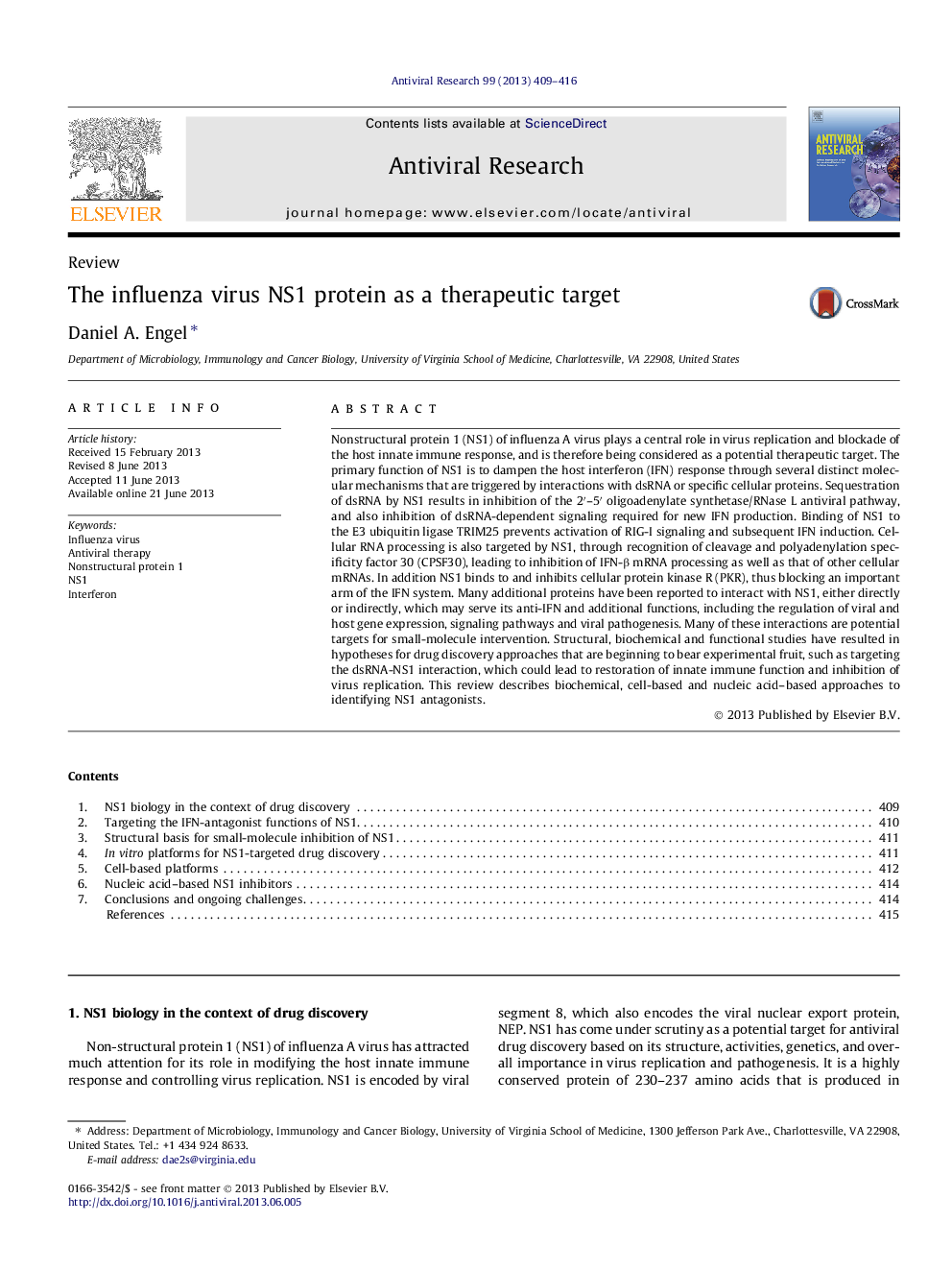| Article ID | Journal | Published Year | Pages | File Type |
|---|---|---|---|---|
| 2510079 | Antiviral Research | 2013 | 8 Pages |
•The influenza virus NS1 protein dampens the host IFN response and facilitates viral replication.•The central role of NS1 in replication and spread make it an attractive antiviral target.•Several anti-IFN mechanisms have been elucidated, as well as the 3-dimensional structure of NS1.•Interactions between NS1 and dsRNA or a variety of protein partners could be targeted for small-molecule intervention.•Biochemical, cell-based and nucleic acid-based approaches are being applied to identify compounds that inhibit NS1.
Nonstructural protein 1 (NS1) of influenza A virus plays a central role in virus replication and blockade of the host innate immune response, and is therefore being considered as a potential therapeutic target. The primary function of NS1 is to dampen the host interferon (IFN) response through several distinct molecular mechanisms that are triggered by interactions with dsRNA or specific cellular proteins. Sequestration of dsRNA by NS1 results in inhibition of the 2′–5′ oligoadenylate synthetase/RNase L antiviral pathway, and also inhibition of dsRNA-dependent signaling required for new IFN production. Binding of NS1 to the E3 ubiquitin ligase TRIM25 prevents activation of RIG-I signaling and subsequent IFN induction. Cellular RNA processing is also targeted by NS1, through recognition of cleavage and polyadenylation specificity factor 30 (CPSF30), leading to inhibition of IFN-β mRNA processing as well as that of other cellular mRNAs. In addition NS1 binds to and inhibits cellular protein kinase R (PKR), thus blocking an important arm of the IFN system. Many additional proteins have been reported to interact with NS1, either directly or indirectly, which may serve its anti-IFN and additional functions, including the regulation of viral and host gene expression, signaling pathways and viral pathogenesis. Many of these interactions are potential targets for small-molecule intervention. Structural, biochemical and functional studies have resulted in hypotheses for drug discovery approaches that are beginning to bear experimental fruit, such as targeting the dsRNA-NS1 interaction, which could lead to restoration of innate immune function and inhibition of virus replication. This review describes biochemical, cell-based and nucleic acid–based approaches to identifying NS1 antagonists.
